Serving 786 students in grades 6-8, Fred Fifer Iii Middle School ranks in the top 50% of all schools in Delaware for overall test scores (math proficiency is bottom 50%, and reading proficiency is bottom 50%).
The percentage of students achieving proficiency in math is 23% (which is lower than the Delaware state average of 29%). The percentage of students achieving proficiency in reading/language arts is 49% (which is higher than the Delaware state average of 42%).
The student:teacher ratio of 16:1 is higher than the Delaware state level of 14:1.
Minority enrollment is 49% of the student body (majority Black), which is lower than the Delaware state average of 61% (majority Black).
Quick Stats (2025)
- Grades: 6-8
- Enrollment: 786 students
- Student:Teacher Ratio: 16:1
- Minority Enrollment: 49%
- Overall Testing Rank: Top 50% in DE
- Math Proficiency: 23% (Btm 50%)
- Reading Proficiency: 49% (Top 30%)
- Science Proficiency: 21% (Top 50%)
- Source: National Center for Education Statistics (NCES), DE Dept. of Education
School Overview
Fred Fifer Iii Middle School's student population of 786 students has declined by 11% over five school years.
The teacher population of 49 teachers has stayed relatively flat over five school years.
Grades Offered
Grades 6-8
Total Students
786 students
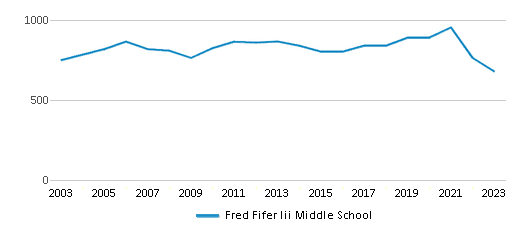
Gender %
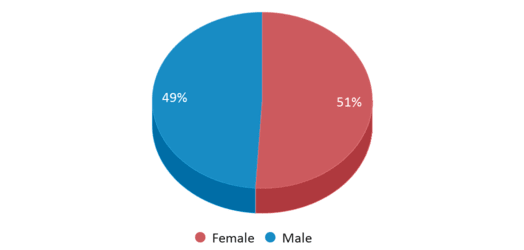
Total Classroom Teachers
49 teachers
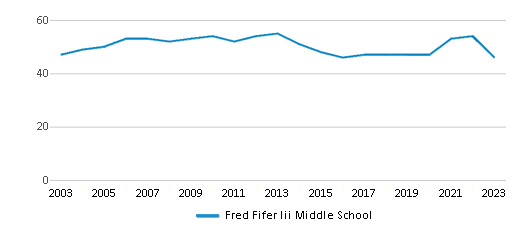
Students by Grade
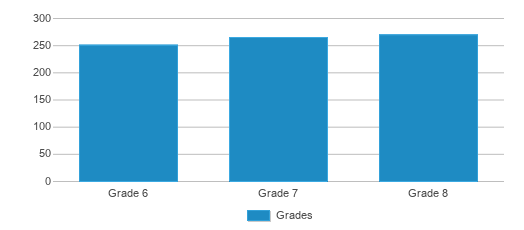
School Calendar
School Rankings
Fred Fifer Iii Middle School ranks within the top 50% of all 201 schools in Delaware (based off of combined math and reading proficiency testing data).
The diversity score of Fred Fifer Iii Middle School is 0.65, which is less than the diversity score at state average of 0.71. The school's diversity has stayed relatively flat over five school years.
Overall Testing Rank
#85 out of 201 schools
(Top 50%)
(Top 50%)
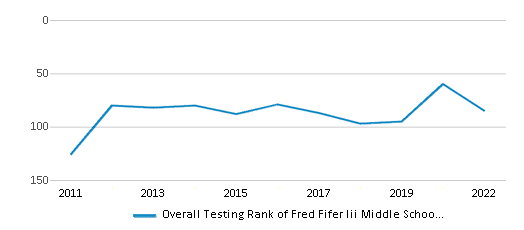
Math Test Scores (% Proficient)
23%
29%
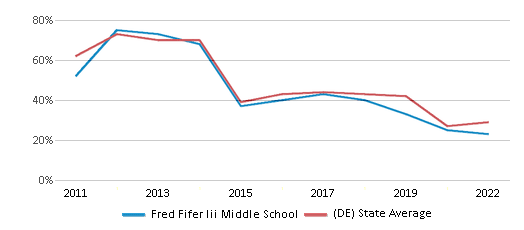
Reading/Language Arts Test Scores (% Proficient)
49%
42%
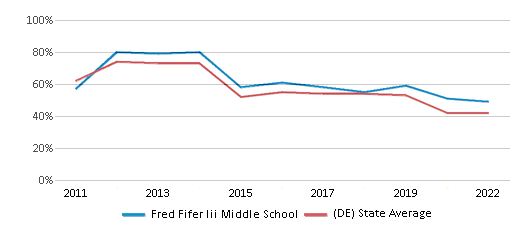
Science Test Scores (% Proficient)
21%
21%
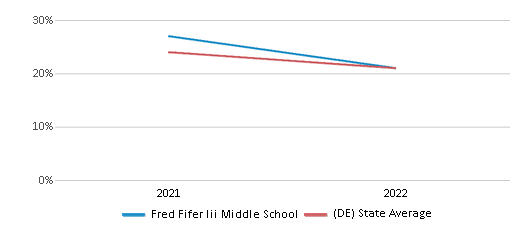
Student : Teacher Ratio
16:1
14:1
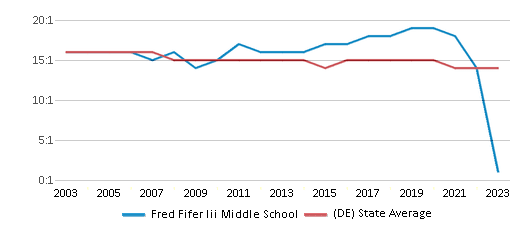
American Indian
n/a
n/a
Asian
2%
4%
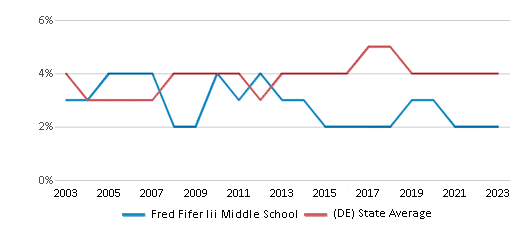
Hispanic
11%
20%
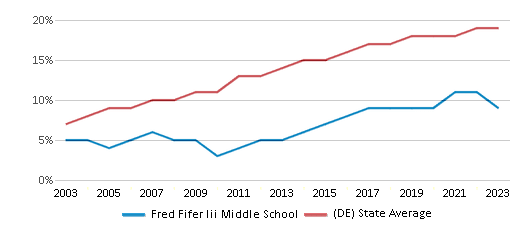
Black
28%
31%

White
51%
39%
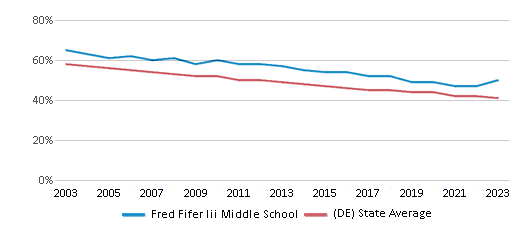
Hawaiian
n/a
n/a
Two or more races
8%
6%
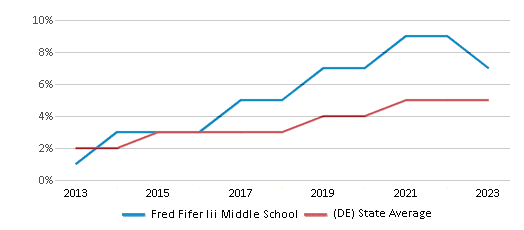
All Ethnic Groups

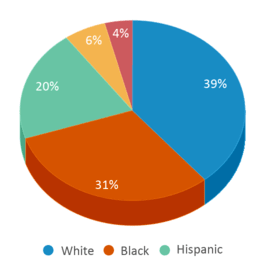
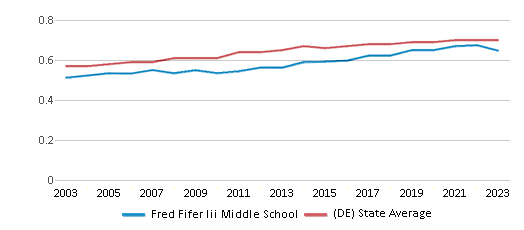
Participates in the National School Lunch Program (NSLP)
Yes
Eligible for Free Lunch
40%
33%
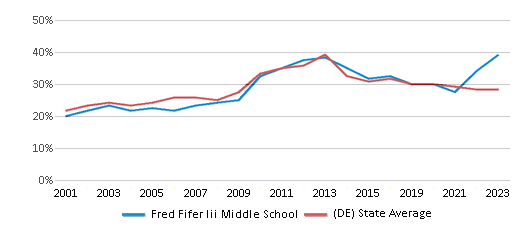
Eligible for Reduced Lunch (12-13)
4%
5%
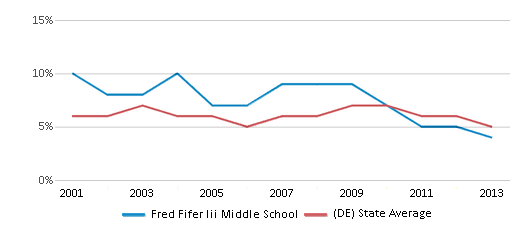
School Statewide Testing
School District Name
Source: National Center for Education Statistics (NCES), DE Dept. of Education
Profile last updated: 02/09/2025
Frequently Asked Questions
What is Fred Fifer Iii Middle School's ranking?
Fred Fifer Iii Middle School is ranked #85 out of 201 schools, which ranks it among the top 50% of public schools in Delaware.
What schools are Fred Fifer Iii Middle School often compared to?
Fred Fifer Iii Middle Schoolis often viewed alongside schools like F. Niel Postlethwait Middle School by visitors of our site.
What percent of students have achieved state testing proficiency in math and reading?
23% of students have achieved math proficiency (compared to the 29% DE state average), while 49% of students have achieved reading proficiency (compared to the 42% DE state average).
How many students attend Fred Fifer Iii Middle School?
786 students attend Fred Fifer Iii Middle School.
What is the racial composition of the student body?
51% of Fred Fifer Iii Middle School students are White, 28% of students are Black, 11% of students are Hispanic, 8% of students are Two or more races, and 2% of students are Asian.
What is the student:teacher ratio of Fred Fifer Iii Middle School?
Fred Fifer Iii Middle School has a student ration of 16:1, which is higher than the Delaware state average of 14:1.
What grades does Fred Fifer Iii Middle School offer ?
Fred Fifer Iii Middle School offers enrollment in grades 6-8
What school district is Fred Fifer Iii Middle School part of?
Fred Fifer Iii Middle School is part of Caesar Rodney School District.
School Reviews
4 7/21/2021
Personally, as a student of the school, the school itself is fairly decent compared to its reputation. Most of the administration team is helpful and kind, and most of the teachers are dedicated to their students and lessons. The only few things I''d recommend fixing is possibly how teachers react to certain situations, and how they treat their students, including listening to them if they have an issue. That can be a big problem at some points, especially when a student has a simple, small issue they''d like to discuss with the teacher. Otherwise, the only other thing that can be iffy at the moment is the Chinese program. Now I do know I'm my years there, my group was the first Chinese class at the school, and it was very messy at first. Though hopefully, by the time other students reach this middle school, the Chinese program is organized and great. However, the Chinese teachers are incredibly kind and compassionate to their students! Good school!
2 5/12/2015
Administration is inconsistent. Often unfair and excessive punishments are given to students. Look at their suspension rates in relation to other schools within the district. Very little accommodations given to students who are above or advanced learners. Very disappointed.
5 9/9/2014
Great School!! It takes my child 21 minutes to walk to school. Thats to far and there are no complete sidewalks, no crossing guardsanywhere until you get to the school. That early in the am is entirely to dangerous for the students to be walking. My child says the cars do not stop for them. Crossing guards are needed everywhere or more buses
Review Fred Fifer Iii Middle School. Reviews should be a few sentences in length. Please include any comments on:
- Quality of academic programs, teachers, and facilities
- Availability of music, art, sports and other extracurricular activities
Recent Articles

What Is A Charter School?
Explore the world of charter schools in this comprehensive guide. Learn about their history, how they operate, and the pros and cons of this educational innovation. Discover key facts about charter schools, including admission policies, demographics, and funding, as well as what to look for when considering a charter school for your child.

10 Reasons Why High School Sports Benefit Students
Discover the 10 compelling reasons why high school sports are beneficial for students. This comprehensive article explores how athletics enhance academic performance, foster personal growth, and develop crucial life skills. From improved fitness and time management to leadership development and community representation, learn why participating in high school sports can be a game-changer for students' overall success and well-being.

February 05, 2025
Understanding the U.S. Department of Education: Structure, Impact, and EvolutionWe explore how the Department of Education shapes American education, from its cabinet-level leadership to its impact on millions of students, written for general audiences seeking clarity on this vital institution.






